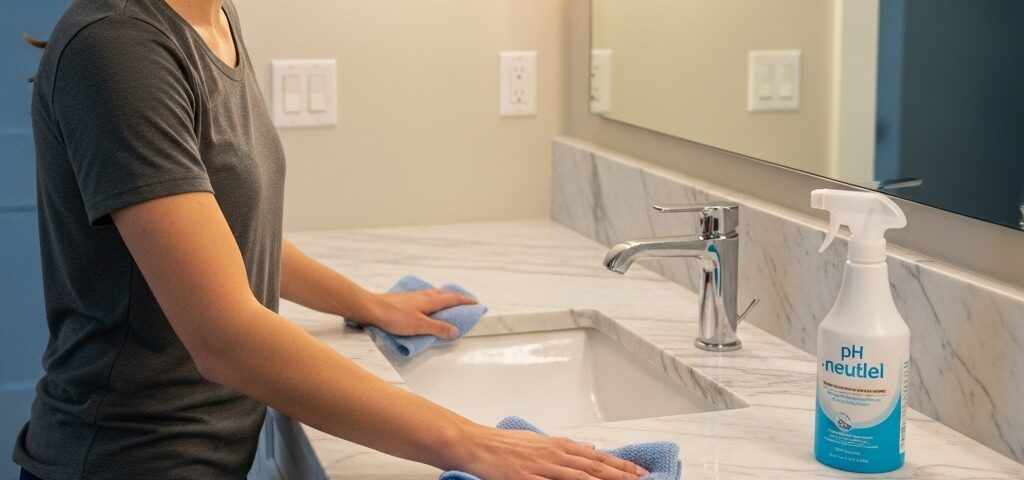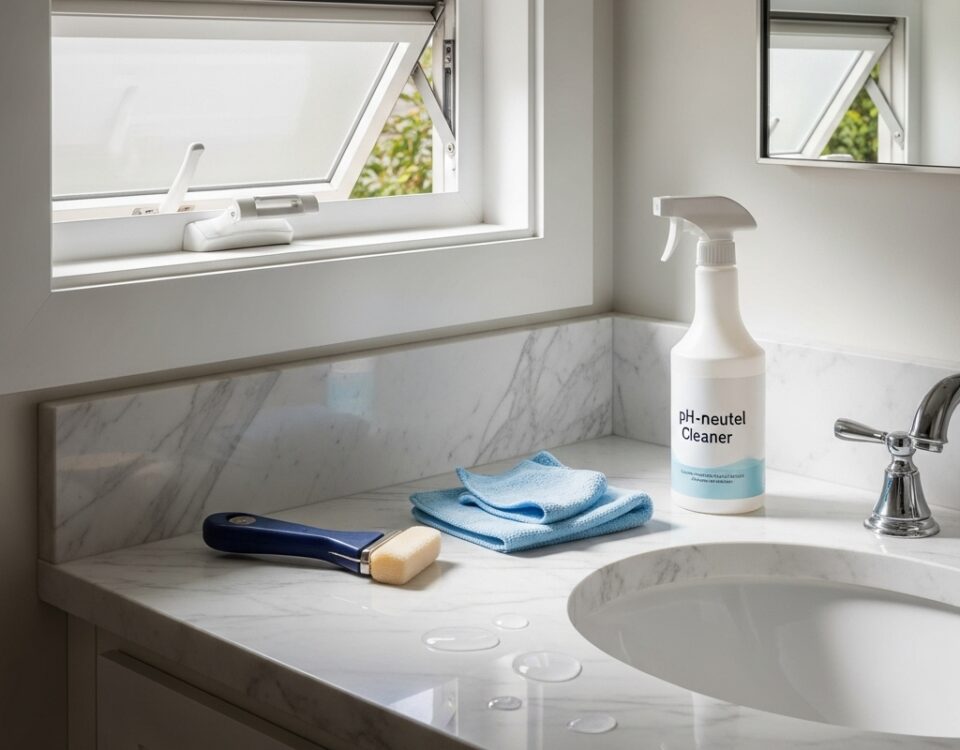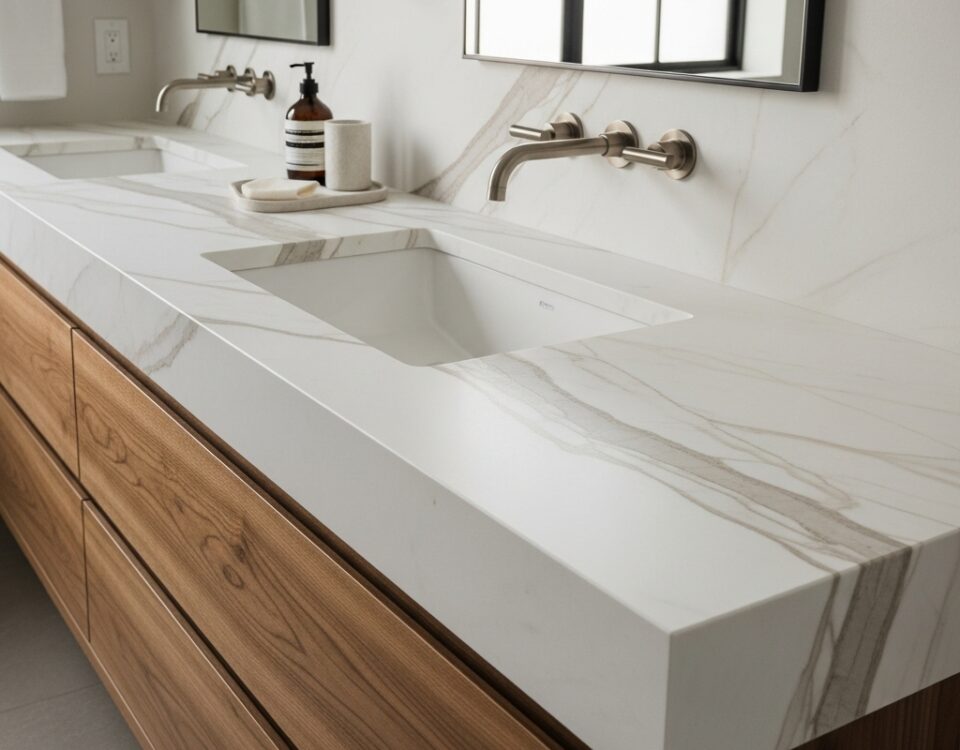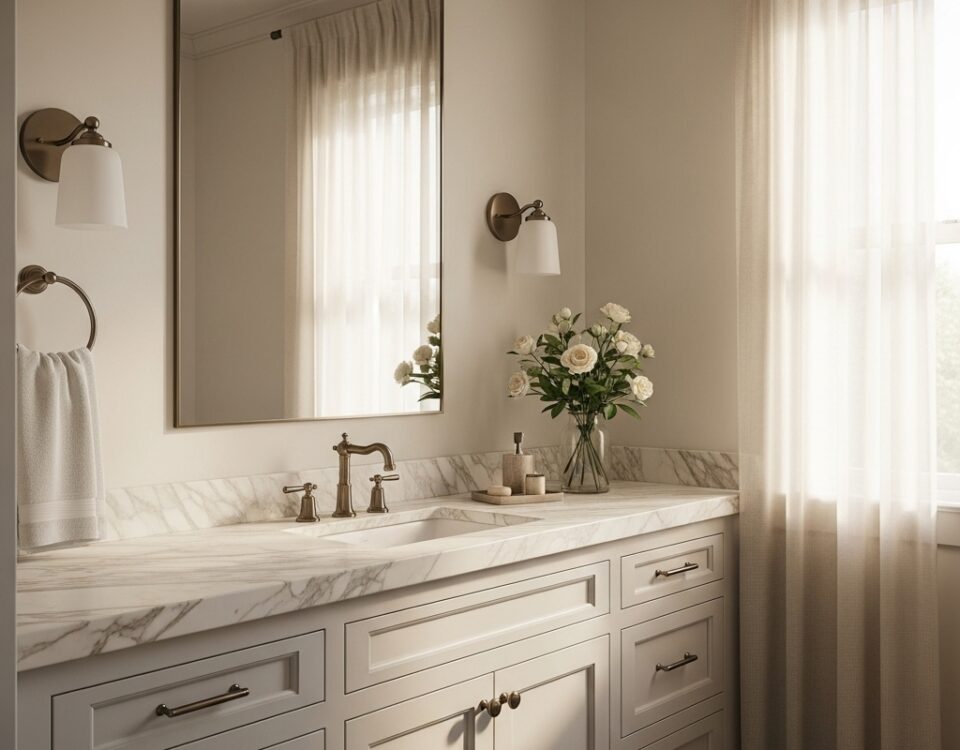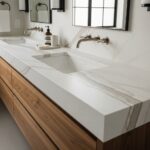
Trends in Marble Vanity Top Designs in Thousand Oaks CA
October 17, 2025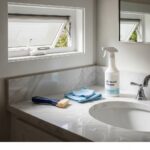
Marble Vanity Top Maintenance Tips for Thousand Oaks CA Homes
October 22, 2025Marble brings an unmistakable sense of calm and sophistication to Thousand Oaks bathrooms, but like any natural material, it has its quirks. Understanding those characteristics helps you enjoy the stone’s beauty without anxiety. In our sunny, breezy climate, bathrooms see regular humidity cycles and plenty of natural light—conditions marble handles well when supported by good habits. With a thoughtful approach, many of the concerns homeowners raise can be prevented or managed gracefully. If you are weighing options for a remodel or planning a refresh, a marble vanity top remains an excellent choice when you know what to expect and how to care for it.
After years of working with area homeowners—from quiet cul-de-sacs in Newbury Park to view homes in Lang Ranch—I have seen a consistent set of questions about marble. Most revolve around etching, staining, seam visibility, and daily wear. The good news is that each of these has practical, low-stress solutions grounded in routine care and smart design choices.
Etching: What It Is and How to Live With It
Etching is a surface change that happens when marble encounters acidic substances. In kitchens, this can be a bigger issue, but in bathrooms, exposures are limited and often mild. Toothpaste, skincare products, or certain cleaners may cause a faint, dull spot if left sitting. The key is simple: wipe spills promptly, keep a small tray for daily products, and choose gentle, pH-neutral cleaners. Over time, a honed finish can make any minor etching less visible, blending it into the stone’s natural movement.
Perspective matters. Marble is a living material, and many homeowners come to appreciate the subtle, softened look that develops with use.
Staining: Prevention Is Powerful
Staining occurs when pigments penetrate the stone. Bathroom culprits include cosmetics, hair dyes, or colored soaps. Modern sealers dramatically reduce the chance of staining by slowing absorption, giving you time to wipe up spills. Making a habit of keeping liquids on a small tray or dish helps maintain a clear, calm surface while adding a curated look. When a stain does happen, spot treatments are available that draw out discoloration without harsh scrubbing.
Choosing a finish and color with balanced veining can also minimize visual impact. In the natural light so common in Thousand Oaks baths, stains are less noticeable when the stone already has movement and tonal variation. Consistent, gentle cleaning is your best long-term strategy.
Seams and Fabrication Considerations
For larger vanities or L-shaped layouts, seams are sometimes necessary. Quality fabrication ensures tight, well-aligned seams with color-matched epoxy that blends with the stone. Placement matters; fabricators often position seams where they are least noticeable—aligned with sink edges or along veining that disguises the joint. Reviewing a layout drawing before fabrication helps you understand where seams will fall and how the pattern will read across the surface.
Edge profiles affect seam perception as well. Eased or square edges create a crisp, modern look and can make seams appear cleaner. More decorative edges add charm but require slightly more attention to keep dust out of crevices. Either choice can be executed beautifully with skilled craftsmanship.
Water Spots and Mineral Buildup
In areas with hard water, mineral deposits can leave faint rings or spots if water pools around faucets and handles. The remedy is easy: keep a soft cloth at hand for quick wipe-downs after use, and periodically clean with a gentle solution designed for natural stone. Avoid vinegar or acidic removers; they can cause etching while trying to solve the problem. Installing aerators on faucets can reduce splashing, keeping the area drier and minimizing spots.
Mirrors and lighting also play a role. Good illumination helps you see where water collects so you can address it quickly. Over time, these small habits keep the marble looking consistently fresh.
Scratches: Rare, Manageable, and Often Avoidable
Marble is durable, but like any stone, it can scratch if something gritty drags across it. This is uncommon in bathrooms compared to kitchens. Using felt pads under decorative items and avoiding abrasive pads prevents most issues before they start. If a faint scratch appears, it is often possible to reduce its visibility with professional polishing. Honed finishes can be especially forgiving, diffusing light so that small lines do not stand out.
Consider how you use the space day to day. Keeping jewelry dishes and grooming tools on trays protects the stone and keeps the vanity organized—a win for both aesthetics and maintenance.
Finish Shifts and Patina
Over time, daily use can subtly change how the finish reads in high-touch areas, especially on polished marble. This is part of the stone’s natural patina, reflecting how the room is used. If you prefer an ultra-consistent look, a honed finish is a great option because it starts with a softer sheen and tends to age more evenly. Periodic professional maintenance can refresh either finish, restoring uniformity when desired.
It helps to think of marble like quality leather or wood—materials that grow more inviting as they live with you. The small stories told by a well-loved surface are often what make a bathroom feel personal and warm.
Humidity, Ventilation, and Local Conditions
Thousand Oaks enjoys a mild climate, but bathrooms still experience humidity from showers. Marble handles this well when paired with proper ventilation. Upgrading to a quiet, efficient exhaust fan helps moisture dissipate quickly, protecting not just the stone but mirrors, paint, and hardware. Opening a window after a hot shower, when possible, supports airflow and keeps the vanity area dry.
Sunlight is another factor. While marble is not harmed by natural light, consistent direct sun can emphasize smudges or water spots. Sheer shades or thoughtful fixture placement can mitigate glare and keep the surface reading smooth and soft throughout the day.
Cleaning Products: What to Use and What to Avoid
A pH-neutral cleaner formulated for stone is your best friend. Avoid bleach, vinegar, citrus-based cleaners, and abrasive powders. Microfiber cloths work well to capture dust and leave a streak-free finish. For deeper periodic cleaning, follow the guidance recommended for your specific marble and finish. A small, consistent routine beats sporadic heavy cleaning every time, and it keeps the stone looking composed even in busy households.
Keep in mind that a little prevention goes a long way. Using soap dispensers instead of bars prevents sticky residue, and placing a coaster under scented oils or diffusers protects against unnoticed drips.
The Middle of Ownership: Course-Correcting With Confidence
Many issues come up after the honeymoon period, three to six months into living with your new vanity. This is when you notice where water lingers or which products tend to leave a film. It is also the perfect time to make small adjustments. Add a tray, switch to a gentler cleaner, or tweak your lighting. If you want a quick refresher on best practices or inspiration for incremental upgrades, a glance at a marble vanity top resource can help you recalibrate your routine without overhauling your space.
Course corrections are normal. Marble rewards attention, not perfection, and the goal is a bathroom that feels easy to live in as well as beautiful to look at.
Working With Trusted Fabricators
Many common issues are minimized when you collaborate with experienced professionals. From selecting the right slab to planning seam placement and edge profiles, a good fabricator anticipates challenges and offers solutions. Communication matters—review layouts, ask about sealing schedules, and discuss how the stone will be finished at sink edges and corners. These conversations translate into a vanity that looks intentional and functions smoothly from day one.
When questions arise after installation, do not hesitate to reach out. Most concerns have straightforward fixes, and catching them early preserves the stone’s beauty.
Frequently Asked Questions
1. Will marble stain easily in a bathroom?
With modern sealing and quick cleanup habits, staining is uncommon. Keeping colored products on a tray offers added protection and organization.
2. Is etching inevitable?
Some subtle etching may occur over time, especially with polished finishes, but it is often faint and blends into the stone’s character. Honed finishes make etches less noticeable.
3. How do I handle water spots?
Wipe surfaces after use and clean periodically with a stone-safe product. Avoid acidic cleaners, which can cause the very marks you are trying to remove.
4. Are seams a problem on longer vanities?
Not when executed well. Skilled fabricators place seams strategically and color-match epoxy to the stone, making them discreet.
5. Can I fix a scratch?
Light scratches can often be reduced by professional polishing. Prevent them by using trays and avoiding abrasive cleaning pads.
Restore the Beauty of Your Marble Vanity Top Today
If you are ready to enjoy the beauty of marble with confidence and calm, let’s talk about a few tailored choices that fit your home and lifestyle. Reach out to explore options, refine details, and see how a marble vanity top can serve as the elegant, dependable centerpiece of your Thousand Oaks bathroom.
If your marble vanity top shows stains, scratches, or dullness, Arena Marble and Granite in Thousand Oaks, CA can help. Our professionals specialize in marble repair, polishing, and maintenance to bring back your surface’s original shine and elegance.


